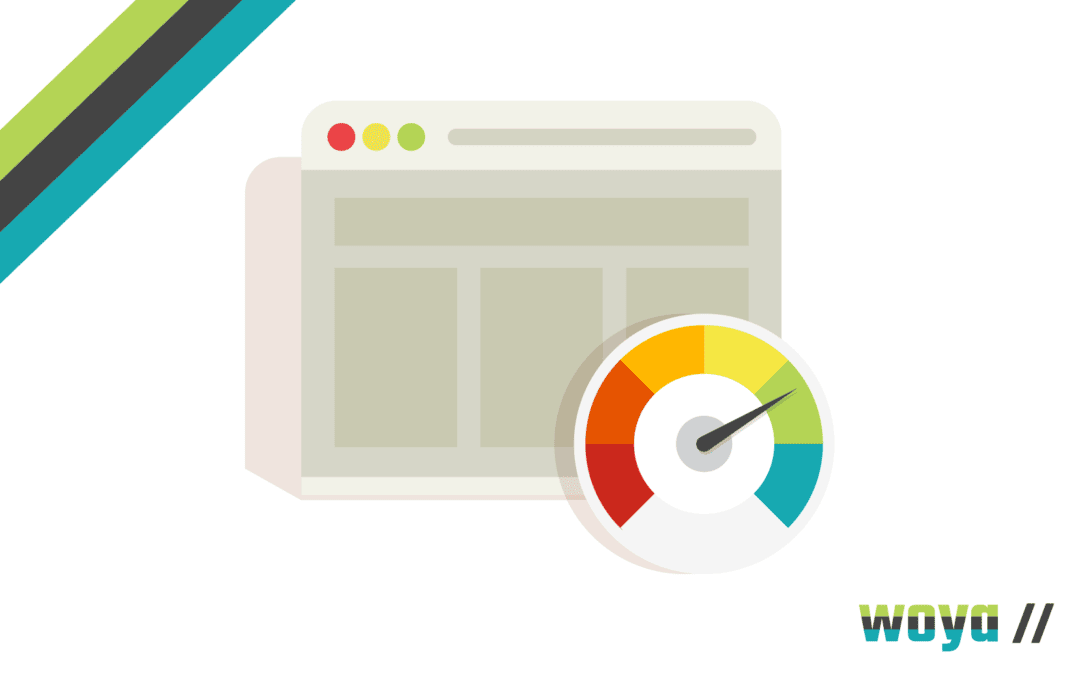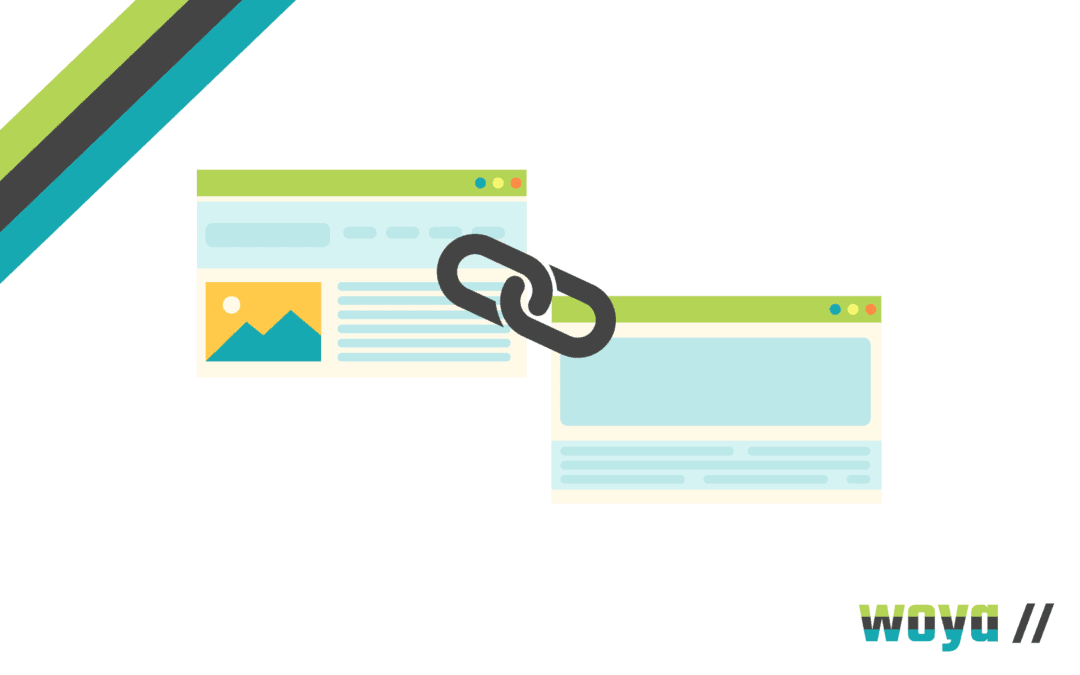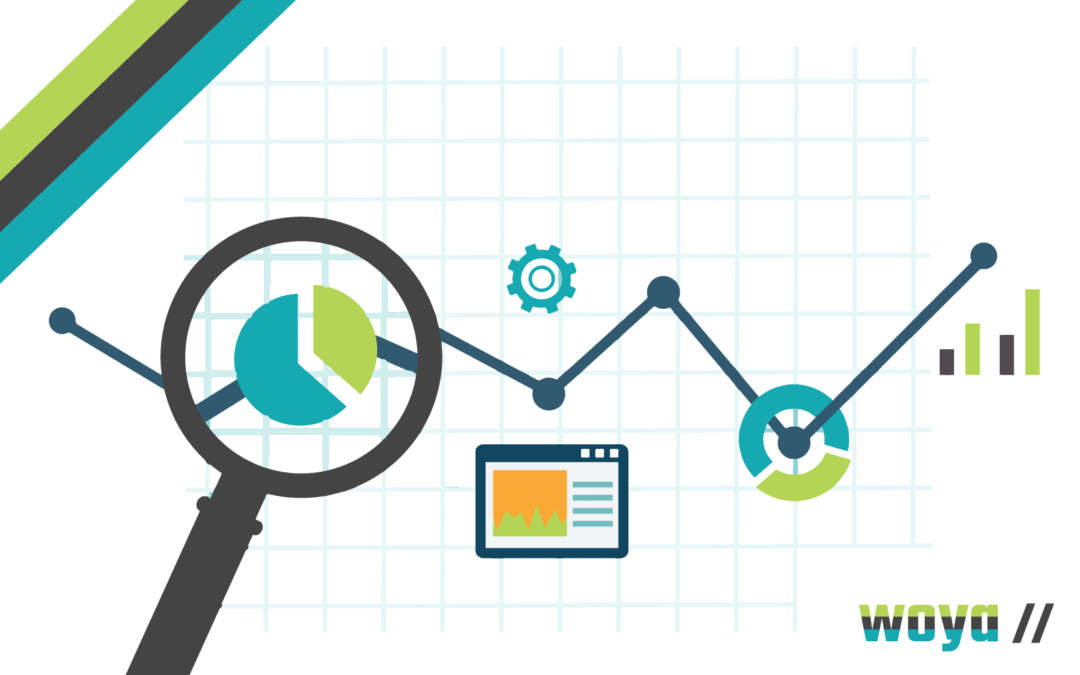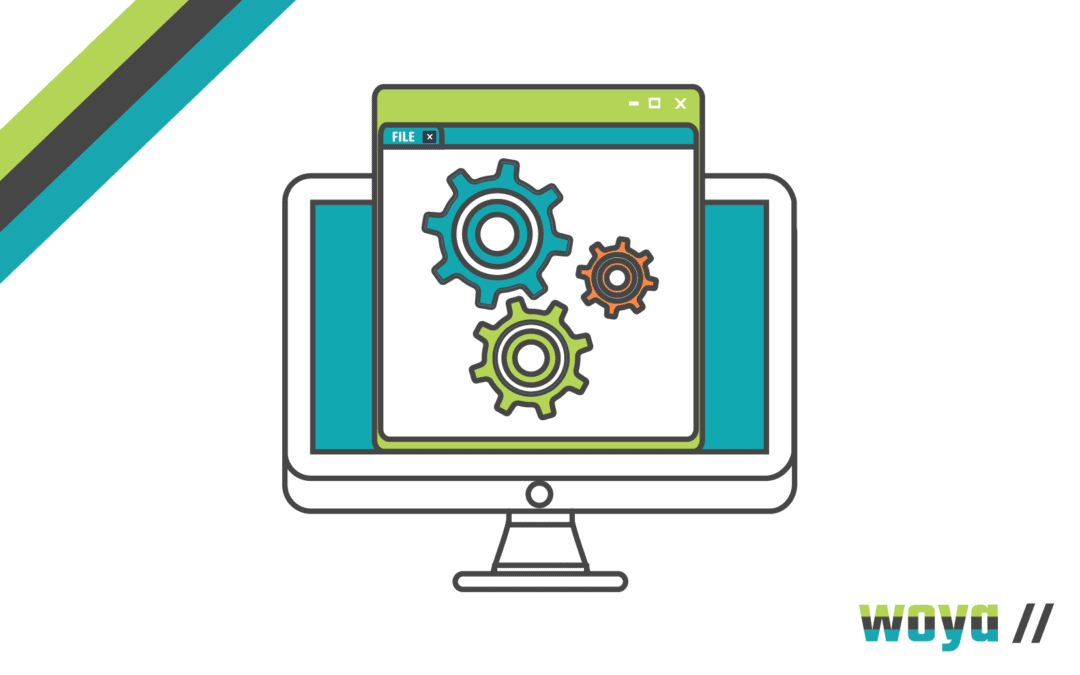
Unpacking SEO On-Page Optimisation
Reading Time: 9 minutesSEO is a broad topic and (contrary to what some people think) not about the odd bit of keyword stuffing inclusion into written text.
In reality, SEO strategy efforts need to focus both on on-site SEO and off, and need to form part of a continuous improvement cycle that is constant.
One element of SEO is on-page optimisation, and here, our experts at Woya Digital explain what that really means and what activities form part of it.
The SEO On-Page Optimisation Checklist
On-Page SEO is the optimisation of content within a webpage to demonstrate to search engine algorithms what its about, who its for and on which related queries it should feature on search engine results pages (SERPs).
This includes not just the physical written content within a page but also ‘behind-the-scenes’ type features such as coding that can’t be physically seen by the user but is present in the foundations of the website.
While there’s no one area of Search Engine Optimisation that matters more than another (in part because we’ll never know exactly how Google weights each element of a website against its ranking practices), SEO on-page optimisation is a critical part.
The origins of SEO are set in keyword research, and this still forms a critical element for easy signalling to web crawlers what content is about. More recent updates to Google have involved the inclusion of other on-page SEO elements such as load speeds and accessibility as part of a ‘people-first content’ focus to differentiate between sites where their topics are similar.
SEO on-page optimisation factors include User Experience (UX) factors and so is responsible for not just making the domain easily searchable but also for providing an easy-to-use website experience that’s useful and reliable.
On-Page SEO: Quality Content
SEO originated as a process within which search engines would scan sites for the target keywords being inputted by users into their search queries – and this very much still exists, albeit in a somewhat more sophisticated way than 20 years ago.
Today, the approach of stuffing content with keywords (keyword stuffing) is considered outdated and will harm search engine rankings. The key to ranking well from content now lies in the quality of that being produced, be it written or in another form.
Content Relevancy
Content should include some of the expected target keywords and terms that users will be typing into their search engine queries but more importantly, must be relevant.
The page’s content published on a site should match the search intent behind the keywords rather than just featuring them multiple times.
There are four types of keyword intent, and brands need to ensure that they’re producing quality content relevant to any that may apply to them. These include:
- Navigational keyword intent – where a user is searching to find something specific, for example the search ‘McDonalds menu’. This is a user looking to find an exact webpage for a specific brand. Marketers must ensure that relevant searches for their brand match up to the correct pages.
- Informational keyword intent – where a user is searching to find information on a topic, for example the search ‘What’s Vitamin A?’. This is a user looking to find details around a topic. Marketers must ensure that users are presented with the info they’re looking for and not with heavy sales content or details of anything unrelated.
- Commercial keyword intent – where a user is searching to differentiate between options, for example ‘Honda vs Subaru’. This is a user looking to compare two different, but similar, things. Marketers must ensure that their pages match up to provide preferential information on their own products and that details are comparable in scope to their competitors.
- Transactional keyword intent – where a user is searching to complete a specific action, for example ‘Buy Star Wars magazine’. This is a user looking to buy something online – the holy grail for those brands with online shops! Marketers must ensure that their pages offer the transaction that the user is looking for quickly and easily.
Content Freshness
Content should be refreshed regularly to ensure it is current. This means that marketers should be adding optimised new content routinely in order to demonstrate the brand’s ongoing relevancy but also to demonstrate current knowledge within its industry.
Regularly adding a new, quality, optimised blog post to your website is one way in which to maintain content freshness, and further reinforce your authority as an exert in your field.
Content Length
The length of webpage content must also be considered. For some searches, users will expect the information they seek to be present ‘above the fold’ on the page and immediately viewable.
Others will want to ‘deep dive’ into information and read on. Content should, therefore, be optimised to the appropriate length based on the keyword or term, topic and competition.
On-Page SEO: Technical SEO
There are a number of optimisations that can be made on-page but also ‘behind-the-scenes’ – in the coding and mark-up of the page itself.
Meta Tags
Meta tagging titles and meta descriptions allows for brands to set exactly what will be displayed in searches.
This gives the opportunity to specify their messaging clearly and concisely in order to best draw attention from those carrying out searches.
URL Structure
Structuring a URL to coherently demonstrate a webpage’s place on a site as well as what information can be found on it allows for search engines to do the same and reinforce their relevance.
Header Tags
Header tags used correctly through written content provides search engines with a hierarchy of the information provided, letting them know how to read it and what to prioritise.
Internal Linking
Linking within a website’s content to other pages on the same site helps users navigate to find more relevant information without leaving to browse elsewhere, increasing the amount of time users spend on a site and lowering their chances of them visiting a competitor.
Internal linking also helps search engines navigate a site more easily.
Anchor Text
Anchor text is the clickable text in a link, be the navigation internal or external to the site.
It is best practice SEO-wise to have the clickable text relevant to the link rather than generic. For example, where a link is directing to a webpage on greenhouses, the anchor text should read something like ‘great greenhouses for new growers’ rather than ‘click here’.
Page Speed
Page speed is a critical component of UX on any site – and user expectations are at an all-time high with an all-time low level of patience.
Webmasters must ensure that pages load within seconds (and preferably quicker) so that users do not get distracted and click off to find the same information elsewhere. Page speed is now a key Google ranking factor and therefore it’s imperative that any large images, videos or other formatting features are optimised for speedy loading.
Mobile Responsiveness
The majority of web traffic is now accessed on a mobile or portable device and so it is no longer acceptable for websites to be created with only traditional computer web browsers in mind.
All websites must be mobile responsive, able to adapt appropriately to the size of the browser upon which it is being accessed without compromising on format or quality. This is an absolutely crucial factor for search engine ranking and Google confirms this.
Canonical Tags
Canonical tags are used to let search engines know which version of a page to display in search results in cases of duplicate content.
This allows for link equity to be consolidated and improves the chances of accurate indexing of a website.
XML Sitemap
An XML (Extensible Markup Language) sitemap allows for search engine web crawlers to find and index all webpages on a site.
Without a sitemap in place, brands may find that their websites are indexed in a way that doesn’t benefit SEO-wise, and so this gives an element of control over how they are presented.
Robots.txt
A robots.txt file is coding within a website that instructs web crawlers on which pages to index and which not to.
If a website has several pages they’d prefer weren’t included amongst search engine results, this file should always be present.
Schema Markup
Further to the above two points, instructing web crawlers on how to display pages amongst search results, schema markup (sometimes known as ‘structured data’) allows search engines to categorise content and pull from it themes to feature on enhanced listings.
There are currently 32 different types of schema and exactly which is appropriate for a brand will vary. An SEO specialist should be approached for guidance on schema markup and to ensure that it’s being used to its maximum potential.
On-Page SEO: User Experience
UX was previously thought of as a separate discipline to SEO, but Google (and other search engines) now consider it a critical factor – ranking those sites that deliver a good experience above those who don’t automatically.
Navigation and Breadcrumbs
Websites can only be useful if users are able to find their way around them, so it’s important that navigation is prioritised to make it as easy to use as possible.
Breadcrumbs are a popular tool used on larger websites that act as navigation aids, presenting visually the current location on a site at a glance.
Prioritising navigation also allows webmasters to ensure that no pages are left without any internal links to them, as this is detrimental to their SEO value.
Page Layout
When working on website navigation, marketers should consider how the layout of a page impacts on the site’s overall UX.
While all information a user is looking for should be available ‘above the fold’ of a page, there may be value in leaving some information elsewhere to encourage longer browse time and further engagement.
If a page isn’t well constructed and formatted, users will simply click off to another site, in turn decreasing its SEO value as search engines believe the site not to be of use because of its high abandonment rate.
Call To Action Placement
Not all users will arrive onto a website and immediately want to make a purchase, fill out a contact form or complete another desired conversion action.
This means that on pages where a conversion isn’t going to happen immediately, a call to action (CTA) can be helpful to encourage and guide them on through to the next step. The placement of these CTAs is key – they must be simple enough to see and use, but not so frequent that they’re ignored.
Calls to action, when utilised properly, can drive further internal traffic and increase user browse time.
Image Optimisation
Images on a page need to be sized as such so that they load quickly and don’t delay the page load speed, but they also need to be optimised for accessibility purposes.
The inclusion of alt tags on images allows for search engines to index the images themselves and for those with screen-readers and other non-visual facilitation tools to access content.
Multimedia Elements
Content isn’t just text, and the use of varying multimedia allows for different audiences to find a brand’s content useful.
Not everyone wants to read a blog or article. Infographics, videos and audio files can all be present on a website and can all be optimised to prioritise loading speeds (for direct SEO impact) and to encourage onward sharing (for indirect SEO impact).
On-Page SEO: Local SEO
Businesses that have a physical setting serving a geographically-set audience can benefit hugely from optimising their website to alter their search engine results to appear tailored to the user based on where they’re located.
NAP Citations
NAP is an abbreviation of Name, Address and Phone Number. In SEO terms, NAP citations are the coding of this information to present it along with a business’ website where it features in search engine results.
This information allows users to make contact with a company without needing to scroll any further, avoiding them clicking through to or making contact with a competitor.
For local searches, Google will rank websites with NAP citations in place above those who haven’t.
Local Keywords
Local relevant keywords are those that contain location-specific words or phrases to indicate that a search engine user is making a geographically-limited query (ie. ‘gardeners Norwich’ or ‘Doncaster cakemakers’).
The use of target keywords on a website helps drive people in the target location to the site – and in turn, as more local web users visit a site, the higher it will rank locally.
Geo-Targeting Content
Tailoring content to include information relevant to users in a certain geographical demographic allows for local SEO ranking and can be hugely impactful for those looking to target particular audiences.
Businesses don’t need to limit geo-targeting to one city or even country, and can replicate the success of it across varying territories (as appropriate), and in different languages.
On-Page SEO: Social Signals
When content on a website is useful, it will be shared by those who found it to be of benefit.
So many users now active on social media, and these channels allow for content to be shared. The easiest way for marketers to facilitate this content sharing is to include social sharing buttons on their webpages for one-click access to a pre-bundled post on the main social media channels.
While Google doesn’t insist on brands having a social media presence to rank them high, the backlinks to a site demonstrates its authenticity and usefulness and so the SEO impact is indirect.
On-Page SEO: Analytics and Monitoring
SEO is an ongoing activity and something that must be constantly worked at for websites to rank as the algorithms behind search engine rankings shift and change.
Of course, where marketers know what works for their website in SEO they can continue this, and where approaches aren’t working, they can make changes to better the performance.
SEO performance on Google can be monitored through Google Analytics software. This interacts with a website through the implementation of a small piece of code within it, and monitors the performance of the domain in search engine results and the behaviour of users on site.
Google Analytics is complemented by Google Search Console integrations for additional insights and metrics but these further insights can be a little more difficult to navigate and so often require an SEO specialist to report on and work through.
On-Page SEO: Forward Focus
On-page SEO is something that marketers and webmasters have full influence over and so can impact both directly and indirectly on their rankings – an area of digital marketing that often feels like it can’t be controlled.
Signalling to a search engine what a site is about and who its for helps the algorithm best judge how and where to rank it amongst the competition. When done right, on-page SEO can be hugely beneficial to ranking position, but when done wrong, websites will stagnate and suffer.
Woya Digital are SEO specialists and work with websites spanning all a wide range of industries to rank high and gain competitive advantage. No matter how simple or complex a website is in structure, there’s lots that can be done. Get in touch with the team today and let us take a bespoke approach to your on-page SEO to help you rank high, rank locally and rank all the time!



